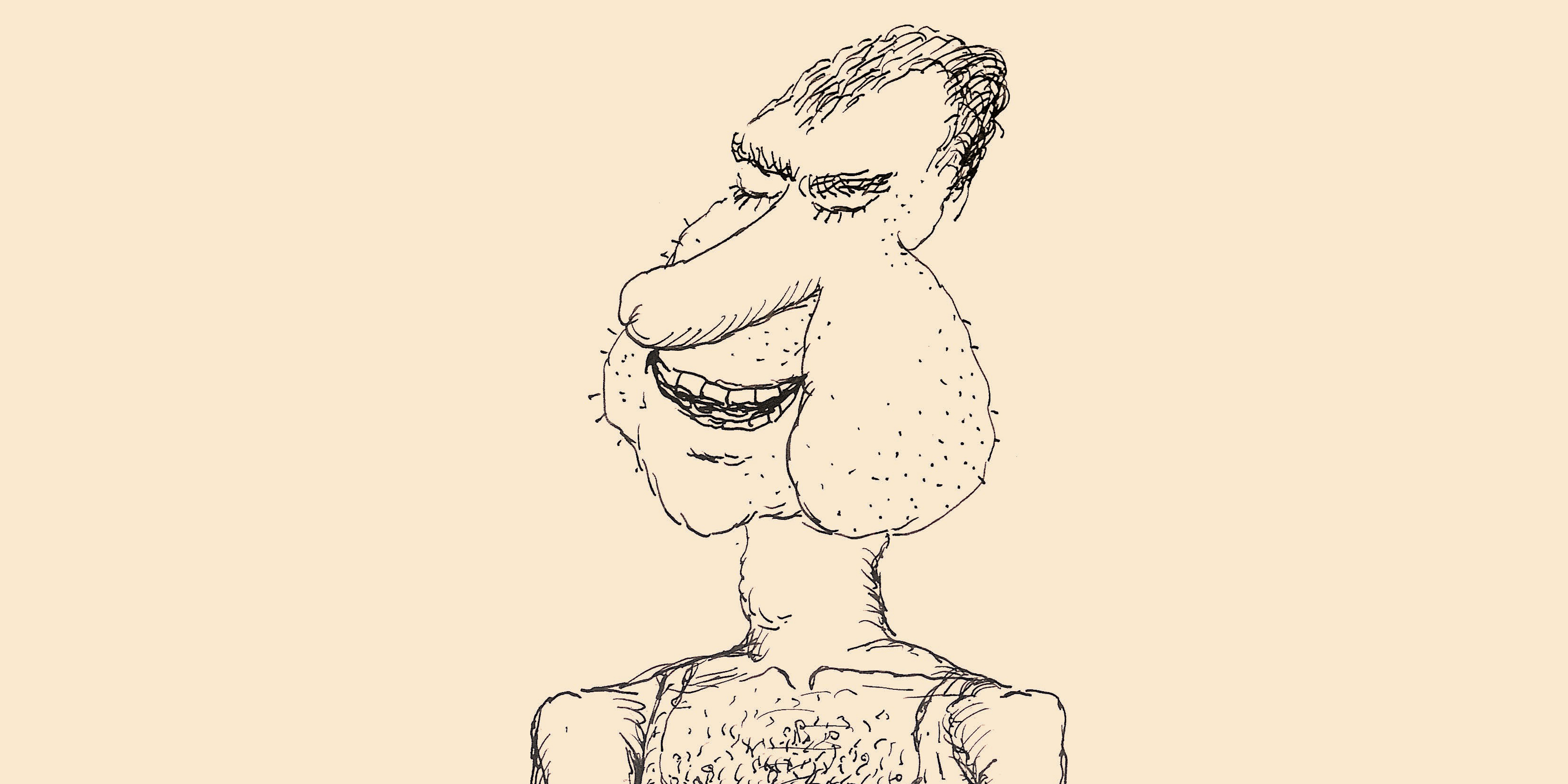
Archive, Archive Exhibitions, Exhibition
- June 2002 - September 2002
- MASS MoCA
In 1971, during a re-election year, Philip Guston (1913-1980) created a series of caricatures telling the story of President Richard Nixon’s time in office. Titled Poor Richard, these provocative, searing renderings of a head of state are remarkable, prescient political satire produced two years before the Watergate scandal and three years ahead of Nixon’s resignation.
In addition to being a caustic denunciation of a political figure and his cabinet (Kissinger, Agnew, and Mitchell also figure prominently in the Poor Richard drawings), within Guston’s career — and the history of modern art — the drawings stand as a marker of sorts; in resorting to caricature to communicate important political ideas, the works highlight how rarely conventional modernist painting connected with larger cultural, social, and political issues. Although intended to be published as a book, these images languished in Guston’s studio until long after his death in 1980 and remained wholly unknown until this exhibition, guest-curated by Debra Bricker Balken (accompanying catalogue published by University of Chicago Press).
Philip Roth describes Poor Richard as “a great American document, commemorating the national disgust that President Nixon inspired and reminding us of how he turned patriotism into junk.” Art Speigelman said, “In the ’70s, Guston gracefully galumphed through the then barely explored borderlands between High Art and Low.”
Guston was born in Montreal, Canada, to a family who emigrated from Odessa, in the Ukraine. His family moved to Los Angeles where Guston attended high school and where he met Jackson Pollock. By age 15, he had decided to become an artist, and enrolled at the Otis Art Institute in 1930. In 1936, Guston joined Pollock in New York City where he worked in the mural painting division of the Federal Art Project. In the early 1940s, he held teaching positions in the Midwest, returning to New York in 1947. He began as a political muralist, but by the early 1950s was associated with the second generation of Abstract Expressionists. He called his signature style “abstract impressionism,” a style of irregular abstraction with small brushstrokes of delicate color — often pinks — on a white field. In the late 1960s, Guston returned to figurative painting. He developed a complex and highly personal iconography including images of Ku Klux Klan members, shoes, and bright, roughly painted bottles.

